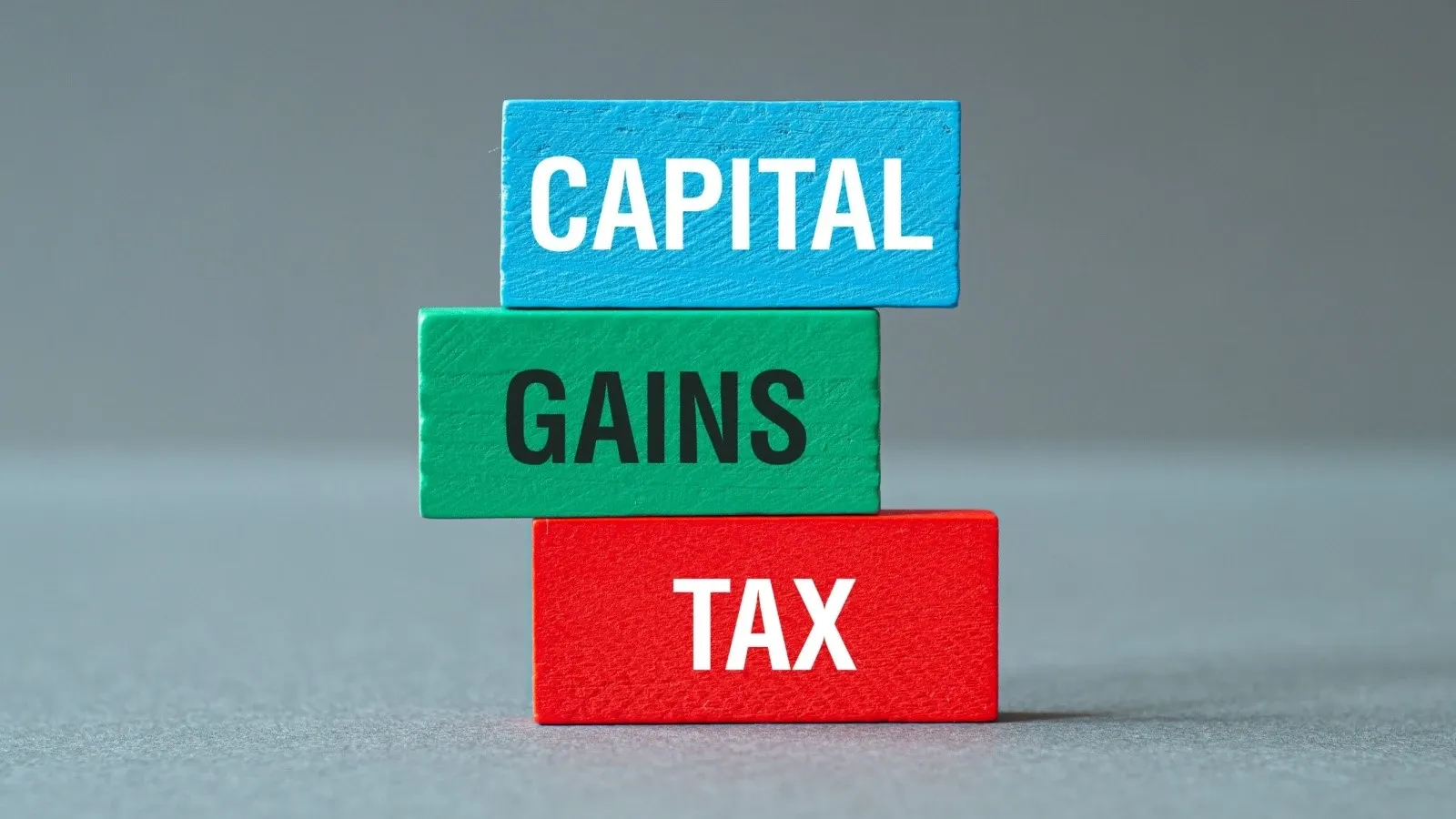Long Term Capital Gain Tax (LTCG) in India 2023 - Rate & Exemptions
Written by Upstox Desk
Published on October 06, 2025 | 6 min read

The profits or gains you enjoy on selling or transferring capital assets are subject to taxation under the Income Tax Act under the heading "capital gains".
These capital gains can be further divided into two categories:
- Short Term Capital Gains (STCG) and
- Long Term Capital Gains (LTCG)
In this blog, we will cover the concepts related to the taxation of long-term capital gains in India.
What are capital gains?
The profits you make while you sell or transfer your capital assets are known as capital gains. These are taxable under the head "capital gains".
Capital assets include both movable and immovable assets. They include properties, vacant plots, securities held by FIIs, shares that are listed and equity, government securities, zero-coupon bonds, mutual funds, debentures and much more. You can have a detailed list here.
Depending on the type of asset you hold, capital gains on capital assets can be considered "Long-term" after:
- 12 months holding period or more for equity investments including equity mutual funds
- 24 months holding period or more for immovable property
- 36 months holding period or more for debt mutual funds and movable property
Computation of long-term capital gains
The computation of long term capital gains will depend on the type of asset.
LTCG on shares and equity investments = 10% on gains beyond Rs.1 lakh
LTCG on debt mutual funds = 20% tax on gains after indexation
Long-term capital gains on immovable property = Full consideration value on sale (-) expenses incurred in connection with sale or transfer of assets (eg: brokerage, commission, etc. (-) Indexed acquisition cost (-) indexed improvement cost (if any)
Tax liability on long-term capital gains in India
Most times, LTCGs are taxable at a rate of 20% plus surcharges and cess as applicable. But there are certain cases where the gains may be taxed at the rate of 10%. A 10% tax rate is only applicable in the following cases:
- LTCGs on the selling of securities (listed) exceeding the amount of Rs 1,00,000 and
- LTCGs on transferring assets like securities (listed on the stock exchange) or mutual funds units (listed or not) and zero-coupon bonds.
Let's understand it better with an example.
Mr Sharma is an employee. In June 2017, he purchased 2,000 shares of XYZ at ₹100 per share. He sold these shares in May 2022 at ₹290 per share through NSE. The maximum price that was quoted on January 31, 2018, was ₹170 per share. Compute the capital gains in this case.
First, since Sharma held the shares for more than 12 months, the gains will be considered long-term capital gains.
Since the shares are listed on a recognised stock exchange and the transaction is liable to STT charges, rule 112A of the Income Tax Act will be applicable here.
Cost of acquisition will be higher of:
- Cost of acquisition, i.e. ₹2,00,000 or
- Lower of: highest quoted price ( i.e. ₹3,40,000) or sales consideration (i.e. ₹5,80,000)
Hence, the cost of acquisition would be considered as ₹3,40,000. Hence, the long-term capital gains will be considered as ₹2,40,000 (₹5,80,000 – ₹3,40,000).
Since the gains are above ₹1,00,000, section 112A will be applicable here. Mr Sharma is liable to pay a tax of 10% on ₹1,40,000 (amount exceeding Rs 1,00,000). His tax liability would be ₹ 40,000.
Exemptions on LTCGs taxes in India
The exemption limit refers to the amount up to which an individual has to pay no tax whatsoever. For LTCGs, the limits are as below:
- For individuals who are residents of India and above 80 years of age, the exemption limit is ₹5,00,000.
- For individuals who are residents of India and are above 60 years but below 80 years of age, the exemption amount is ₹3,00,000.
- For individuals who are not residents of India, the exemption amount is ₹2,50,000.
- For Hindu Undivided Families, the exemption limit is ₹2,50,000.
Is adjustment of LTCGs against the basic exemption limit possible?
A question that might be bothering you is, "Can I adjust my LTCGs against the basic exemption limit given in the Act"?
The answer to this question, as given by the Income Tax Department, will depend on your residential status.
According to the Act, only resident individuals and Hindu Undivided Families are eligible or allowed to adjust their long-term capital gains against the basic exemption limit by the department.
The point to be noted is the adjustment can only be made after adjusting all other incomes. If any amount, after adjusting all other incomes against the exemption limit, is left, then only it would be utilized to adjust LTCGs.
Let's understand it better with an example.
Mr Ajay is a 65-year-old retired non-resident individual. He is earning a pension of Rs 5,000 a month. In June 2017, he bought a piece of land in Punjab and sold the same in June 2022 for a capital gain of Rs 2,30,000. He doesn't have any other income source. Calculate his tax liability.
Since he held the piece of land for over 24 months, the gains will be considered LTCGs. For non-resident individuals, the basic exemption amount is ₹2,50,000. As per the provisions of the Act, he can adjust his pension income against the exemption amount, but he is not allowed to adjust the rest towards LTCGs.
His pension amount, i.e. Rs 60,000, can be adjusted against Rs 2,50,000. The remaining exemption limit, i.e. 1,90,000, can not be used to set off his LTCGs on the selling of land. He is liable to pay 20% on LTCGs of ₹2,30,000, i.e. ₹46,000. Plus, health and education cess, i.e. 4%. Total tax liability would be Rs 47,840.
Deductions
Unfortunately, no deductions under sections from 80C to 80U are eligible for LTCGs in India.
Ways to reduce tax liability on LTCGs
The following strategies can be opted to reduce your tax liability on long-term capital gains:
- Setting off against losses: One of the best ways to reduce your tax liability is by setting off your gains against losses of that particular financial year.
- Reinvest in bonds: You can reduce your tax liability by reinvesting the proceeds in NHAI and RECL bonds (section 54EC).
- Capital Gains Account Scheme: If let's say, you are not able to invest your gains towards the property, you can park these funds in a CAGS scheme/account. But the point is you need to use these funds within a certain period to buy or build property (residential).
- Others: You can refer to sections 54, and 54F to reduce your tax liability of LTCGs.
Final words
Capital gain taxes, whether long-term or short-term, should be addressed as they are an important aspect of financial planning.
Long-term capital gains indeed attract fewer tax liabilities as compared to STCGs. But you must know that these can further be minimized using the right strategies. You must consult your financial advisor for the same.
About Author
Upstox Desk
Upstox Desk
Team of expert writers dedicated to providing insightful and comprehensive coverage on stock markets, economic trends, commodities, business developments, and personal finance. With a passion for delivering valuable information, the team strives to keep readers informed about the latest trends and developments in the financial world.
Read more from UpstoxUpstox is a leading Indian financial services company that offers online trading and investment services in stocks, commodities, currencies, mutual funds, and more. Founded in 2009 and headquartered in Mumbai, Upstox is backed by prominent investors including Ratan Tata, Tiger Global, and Kalaari Capital. It operates under RKSV Securities and is registered with SEBI, NSE, BSE, and other regulatory bodies, ensuring secure and compliant trading experiences.

























